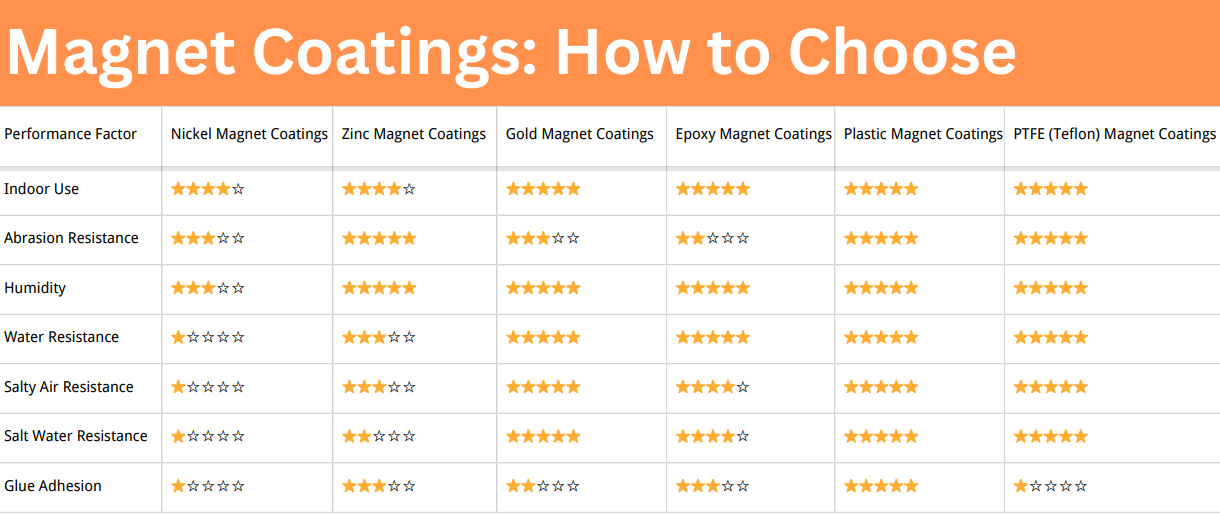How to Use VCM Voice Coil Motor in Cameras
VCM Voice Coil Motor Basics
--What are VCM Voice Coil Motors?
The name "voice coil" originates from loudspeakers, where it refers to a coil of wire that creates sound signals. Due to this coil, we are able to hear high-quality audio.
A Voice Coil Motor, or VCM, is a high-performance direct-drive motor that converts electrical energy to linear mechanical motion without intermediate mechanisms like screws or gears. This is achieved by positioning an electrified coil in a uniform magnetic field, generating electromagnetic force to drive the load in a straight line.
The direct-drive nature of VCMs eliminates most of the drawbacks of traditional motors, such as backlash, inertia, friction, and rigidity. VCMs are compact, easy to control, and highly integratable, offering excellent responsiveness, speed, and acceleration.
Further reading: Everything You Need to Know About Voice Coil Motors
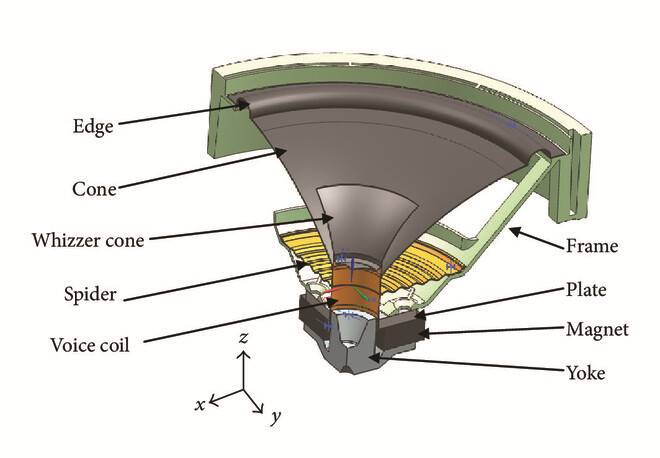 [1]
[1]
Fig. 1 VCM in Speaker Diagram
--Types and Structures of VCM Voice Coil Motors
Voice coil motors (VCMs) are typically categorized into moving coil and fixed coil types, each offering various advantages for precise motion control.
- In moving coil designs, the magnet is fixed and the coil is mobile, and thus they are best for applications where fast response and low inertia are required, such as smartphone autofocus systems.
- Fixed coil designs, in which the magnet is mobile, are stronger and have higher force output, typically found in hard disk drives and industrial machinery where robust performance is needed.
- Choice of these configurations depends on the needs of speed, the types of load, and the ambient conditions.
Beyond these considerations, specialized VCM models have been created for specific technical demands. Custom designs include dual-coil models to facilitate cost-effective high-performance control for high-end optical stabilization and multi-axis models. Miniature configurations have also been made for applications with tight space, like medical endoscopes and wearables.
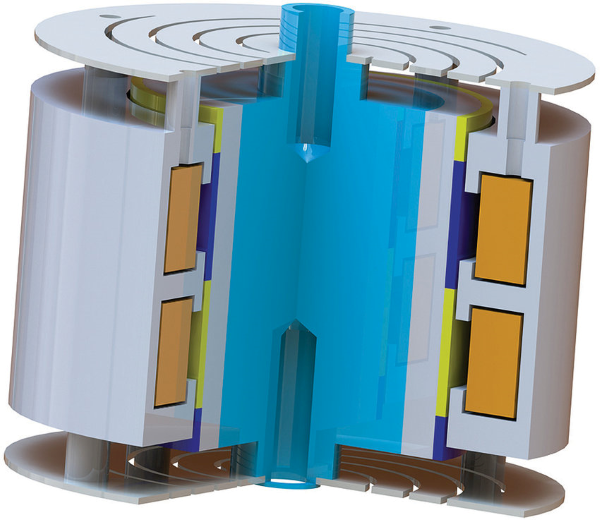 [2]
[2]
Fig. 2 VCM Voice Coil Motors with Fixed Coils
--Magnets Used in VCM Voice Coil Motor
Operations of voice coil motors heavily depend on their magnetic components, neodymium iron boron (NdFeB) magnets specifically, which are the industry standard due to their high magnetic power and compact size. Rare earth magnets used within VCMs provide high force density with a modest size, making them applicable in space-constrained applications like smartphone camera and precision actuators.
VCM magnets have various performance grades (42M, 45H, 48SH, and 52M), and selection depends on required magnetic flux and operating temperature range. High-grade magnets (designated by letters like H, SH) offer better temperature stability for tough applications, and standard grades (M series) are sufficient for consumer electronics. Magnetization direction is also important—radial magnetization in ring-shaped magnets offers uniform magnetic field distribution, which is very important for smooth, stable motion control.
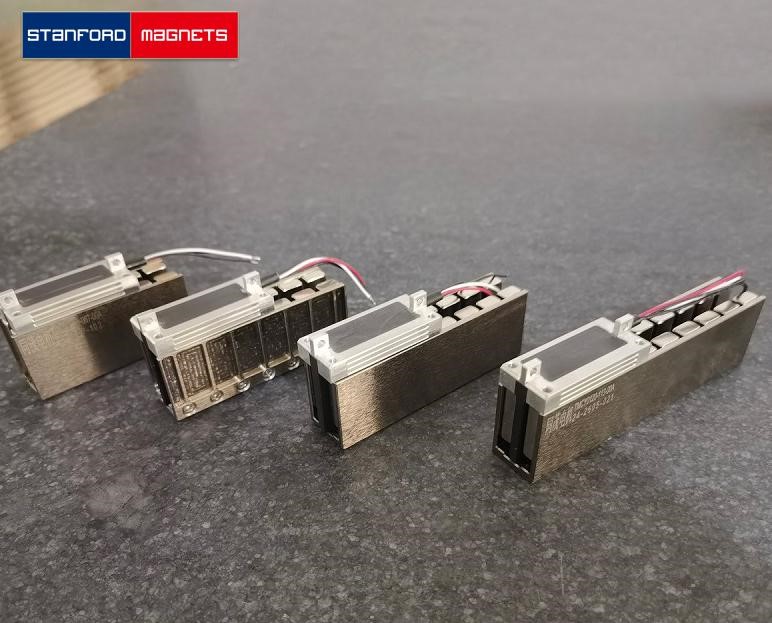
Fig. 3 ZR Micro Voice Coil Motor—Stanford Magnets
VCM Voice Coil Motor Application in Cameras
--VCM Voice Coil Motor Camera Market
The demand for VCMs has grown rapidly in the recent years. Demand for VCMs globally during 2017-2019 was 1.8 billion, 1.9 billion, and 2.0 billion units, respectively. Demand for multi-camera and dual-camera smartphones further elevated the demand. Global consumption of VCMs is forecasted to grow up to 3.94 billion units in 2025.
Other than smartphone cameras, VCMs are also used in other fields such as laptops, webcams, video monitors, scanners, and hard disk drives. They are highly accurate and have fast response and are therefore ideal for use in applications where fine adjustment and stability are required.
The autofocus technology of the future will be focused on the development of increased speed and improved image stability. VCMs are moving from standard motors to Optical Image Stabilization (OIS) motors, which overcome issues like blurring images and improve camera images' overall stability.
--Why We Use VCM Voice Coil Motors for Lens Focusing?
Voice Coil Motors (VCMs) are currently the standard in lens focus systems of modern cameras due to their unique set of characteristics.
- Rapid Speed: VCMs can focus nearly instantly.
- Precision: They offer micron-level focusing for good images.
- Miniature Form Factor: Their small size is ideally matched for modern, thin devices.
- Low Power Consumption: VCMs are power-efficient, extending battery life in portable devices.
- Silent Operation: VCMs are quiet in operation, as opposed to traditional motors, and thus can be utilized in video recording.
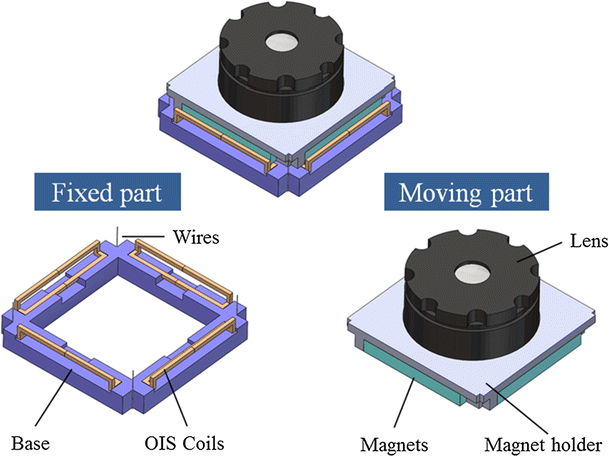 [3]
[3]
Fig. 4 Structure of Proposed OIS VCM Actuator
--Where to Use VCMs for Lens Focusing?
VCMs are an important element in modern camera systems, particularly in autofocus (AF) systems. This is how they are used in lens focusing:
1. Smartphone Cameras
VCMs are used in smartphones to shift the lens position to autofocus. When you focus on something by tapping, the camera sensor senses the distance, and the VCM will shift the lens forward or backward to achieve the sharp focus. The operation happens in milliseconds to allow fast and accurate focusing.
For example, the Samsung Galaxy and iPhone high-end smartphones use VCMs with OIS to reduce hand shake-blur. The VCM compensates for slight shakes by adjusting the lens in real-time, hence taking better-quality pictures and more stable video.
2. Digital Cameras and DSLRs
In cameras, VCMs are applied in compact lenses where there is limited space. VCMs provide silent and faster focusing than traditional motors, and this proves to be greatly beneficial in video recording. Some mirrorless cameras also use VCMs in order to achieve silent autofocus, which proves highly beneficial in silent photography when things are quiet.
3. Industrial and Medical Imaging
VCMs are used in industrial inspection and in medical imaging cameras, where precision is the prime issue. In endoscopes, for instance, VCMs give fine focusing through tissues or organs to obtain crystal-clear images for diagnoses.
4. Action Cameras and Drones
In drones and action cameras, VCMs suspend the lens in flight or movement, rendering crystal-clear pictures and videos under challenging conditions. VCM's lightweight and miniature nature makes it a perfect application in such circumstances.
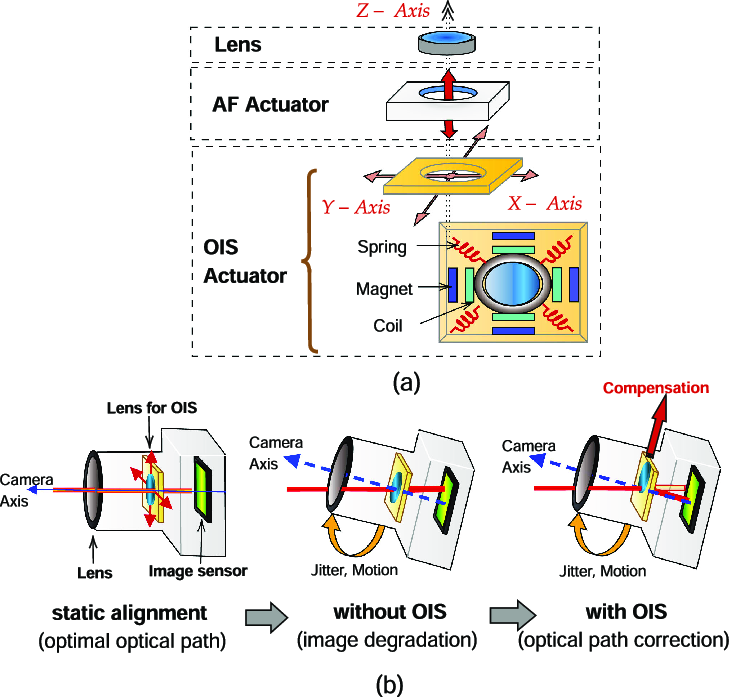 [4]
[4]
Fig. 5 VCM Lens Structure and Basic Principle of OIS For Cameras
Conclusion
VCM voice coil motors revolutionized camera technology by enabling higher speed, silent, and accurate autofocus and image stabilization. For more voice coil motors, please check Stanford Magnets.
Reference:
[1] Hsieh, C.-L & Chang, Yu-Hao & Chen, Yu-Ta & Liu, Chien-Sheng. (2018). Design of VCM actuator with L-shape coil for smartphone cameras. Microsystem Technologies. 24. 1-8. 10.1007/s00542-017-3454-1.
[2] Bekkali, Abdelmoula & Fujita, Hideo & Hattori, Michikazu. (2022). New Generation Free-Space Optical Communication Systems With Advanced Optical Beam Stabilizer. Journal of Lightwave Technology. 40. 1-1. 10.1109/JLT.2022.3146252.
[3] Hu, Yue & Zhao, Xi & Yamaguchi, Takao & Sasajima, Manabu & Sasanuma, Tatsushi & Hara, Akira. (2017). Effects of the Cone and Edge on the Acoustic Characteristics of a Cone Loudspeaker. Advances in Acoustics and Vibration. 2017. 1-12. 10.1155/2017/2792376.
[4] Loussert, Guillaume & Angleviel, Didier & Delbaere, Michaël. (2016). Moving Magnet Linear Actuator for Active Vibration Control. Auto Tech Review. 5. 38-43. 10.1365/s40112-016-1120-0.












